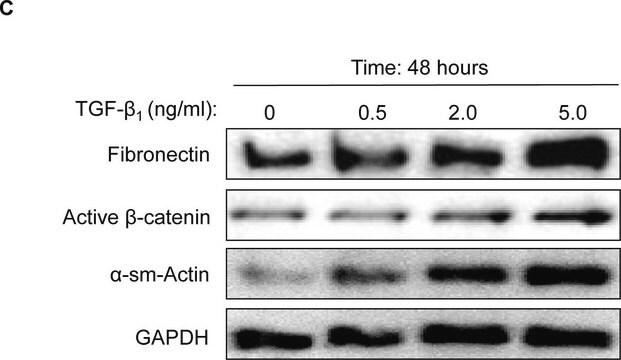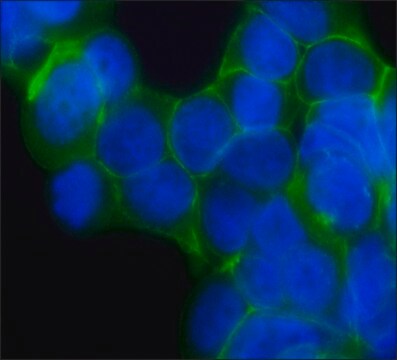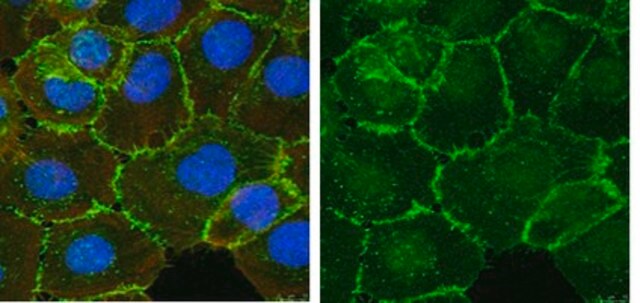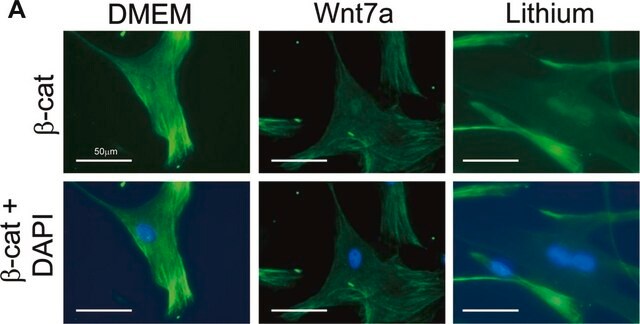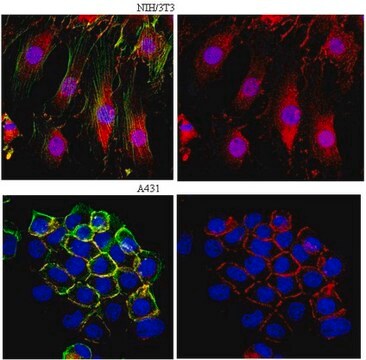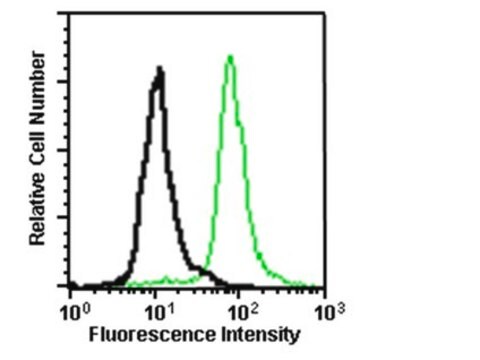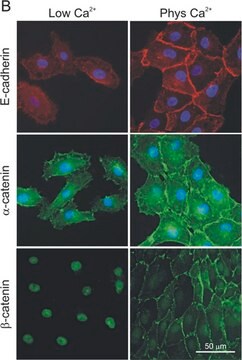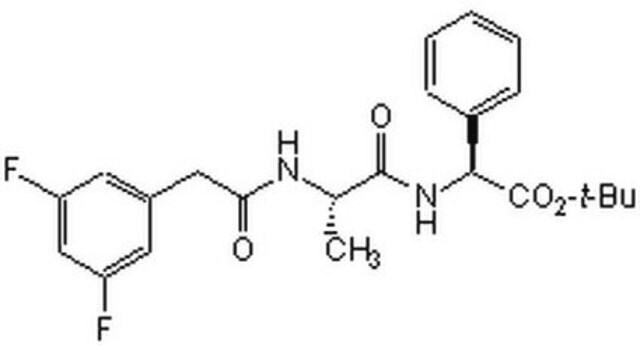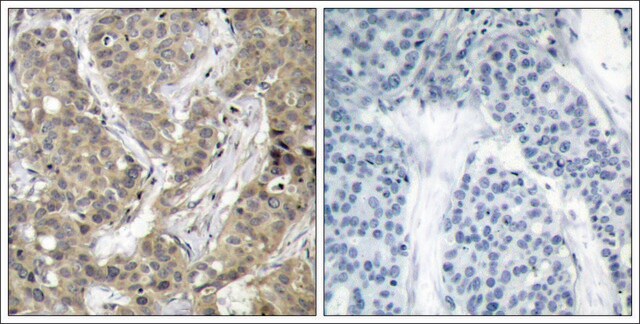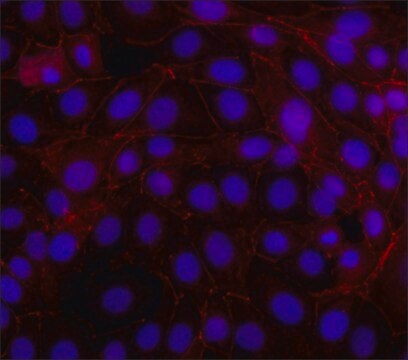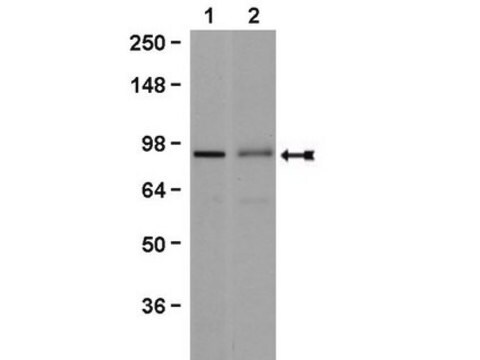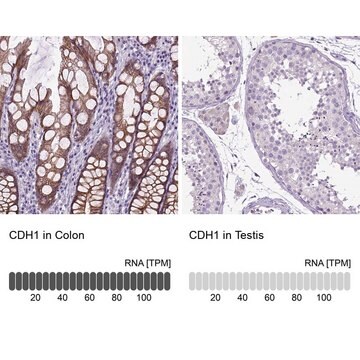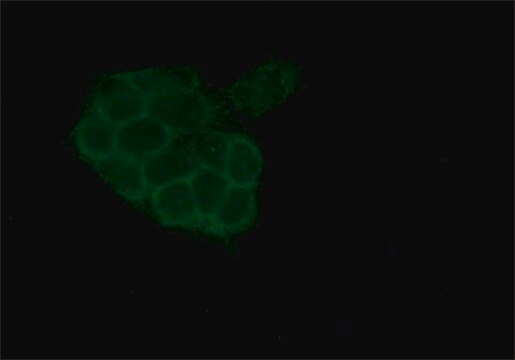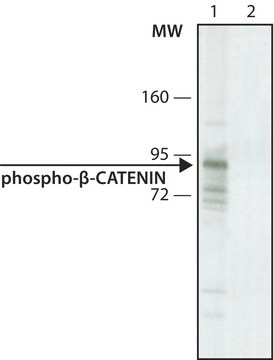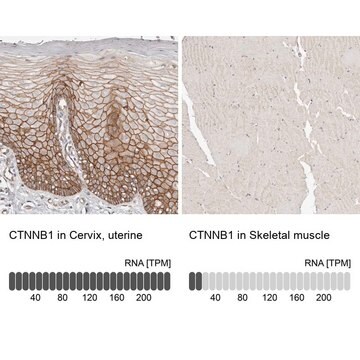C2206
Anti-β-Catenin antibody produced in rabbit
whole antiserum
Synonyme(s) :
Anti-CTNNB, Anti-EVR7, Anti-MRD19, Anti-NEDSDV, Anti-armadillo
About This Item
Produits recommandés
Source biologique
rabbit
Niveau de qualité
Conjugué
unconjugated
Forme d'anticorps
whole antiserum
Type de produit anticorps
primary antibodies
Clone
polyclonal
Poids mol.
antigen 88-94 kDa
Contient
15 mM sodium azide
Espèces réactives
several mammalian species
Conditionnement
antibody small pack of 25 μL
Technique(s)
dot blot: suitable using the immunogen and related peptides conjugated to BSA
immunocytochemistry: 1:2,000 using cultured MDBK cells
immunohistochemistry: 1:2,000 using bovine kidney frozen sections
western blot: 1:4,000 using cultured MDBK cells
Application(s)
research pathology
Conditions d'expédition
dry ice
Température de stockage
−20°C
Modification post-traductionnelle de la cible
unmodified
Informations sur le gène
human ... CTNNB1(1499)
mouse ... Ctnnb1(12387)
rat ... Ctnnb1(84353)
Description générale
Spécificité
Immunogène
Application
- co-immunoprecipitation
- immunoblotting
- immunofluorescence
- immunoperoxidase assay
Actions biochimiques/physiologiques
Clause de non-responsabilité
Vous ne trouvez pas le bon produit ?
Essayez notre Outil de sélection de produits.
Code de la classe de stockage
12 - Non Combustible Liquids
Classe de danger pour l'eau (WGK)
nwg
Point d'éclair (°F)
Not applicable
Point d'éclair (°C)
Not applicable
Faites votre choix parmi les versions les plus récentes :
Déjà en possession de ce produit ?
Retrouvez la documentation relative aux produits que vous avez récemment achetés dans la Bibliothèque de documents.
Les clients ont également consulté
Articles
Cancer stem cell media, spheroid plates and cancer stem cell markers to culture and characterize CSC populations.
Notre équipe de scientifiques dispose d'une expérience dans tous les secteurs de la recherche, notamment en sciences de la vie, science des matériaux, synthèse chimique, chromatographie, analyse et dans de nombreux autres domaines..
Contacter notre Service technique
